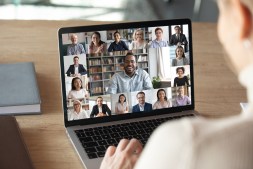Protecting Personal Privacy: Best Practices for Drone Users
Drones have become increasingly popular in recent years, with their ability to capture stunning aerial footage and complete tasks with ease. However, as the use of drones continues to grow, so do concerns about personal privacy. It is essential for drone users to understand the privacy considerations and take necessary precautions to protect the privacy of individuals. In this article, we will discuss some best practices that every drone user should follow when it comes to privacy.
Understanding Legal Requirements
Before taking flight with a drone, it is crucial to familiarize yourself with the legal requirements regarding privacy. Different countries and regions may have specific laws and regulations governing the use of drones, including guidelines on how they can be used near private property or public spaces.

In most cases, drone users are required to respect the privacy rights of individuals when operating their drones. This means avoiding flying over private property without permission and refraining from capturing images or videos that could invade someone’s privacy.
Obtaining Consent
Obtaining consent from individuals before capturing their images or recording videos is an important step in protecting personal privacy. While it may be tempting to capture stunning shots of people in public spaces, it is essential to remember that everyone has a right to their own image and privacy.
If you plan on using your drone in public areas where people might be present, consider posting signs or notices informing others that you will be flying a drone and asking for their consent. This way, anyone who does not wish to be recorded can choose to avoid those areas.
Respecting Private Property
Respecting private property boundaries is crucial when it comes to protecting personal privacy. As a responsible drone user, you should avoid flying over someone’s private property without obtaining explicit permission.
When planning your flights, make sure you familiarize yourself with local laws regarding where drones can fly near private property. Some regions may require you to maintain a certain distance from private residences or other sensitive areas. By respecting these boundaries, you can ensure that you are not intruding on someone’s privacy or causing unnecessary discomfort.
Secure Data Handling
Another important aspect of protecting personal privacy when using drones is ensuring the secure handling of any data captured during flights. This includes images, videos, and any other information that may be collected.
To safeguard the privacy of individuals, it is crucial to store the data securely and limit access only to authorized personnel. Encrypting the data and using strong passwords for storage devices can help prevent unauthorized access. Additionally, consider deleting any unnecessary data once it has served its purpose to further protect privacy.
In conclusion, as drones become more prevalent in our society, it is essential for drone users to prioritize personal privacy considerations. Understanding legal requirements, obtaining consent from individuals, respecting private property boundaries, and implementing secure data handling practices are all key steps towards protecting personal privacy when using drones. By following these best practices, drone users can enjoy their hobby or profession while ensuring that they do not infringe upon the rights of others.
This text was generated using a large language model, and select text has been reviewed and moderated for purposes such as readability.


